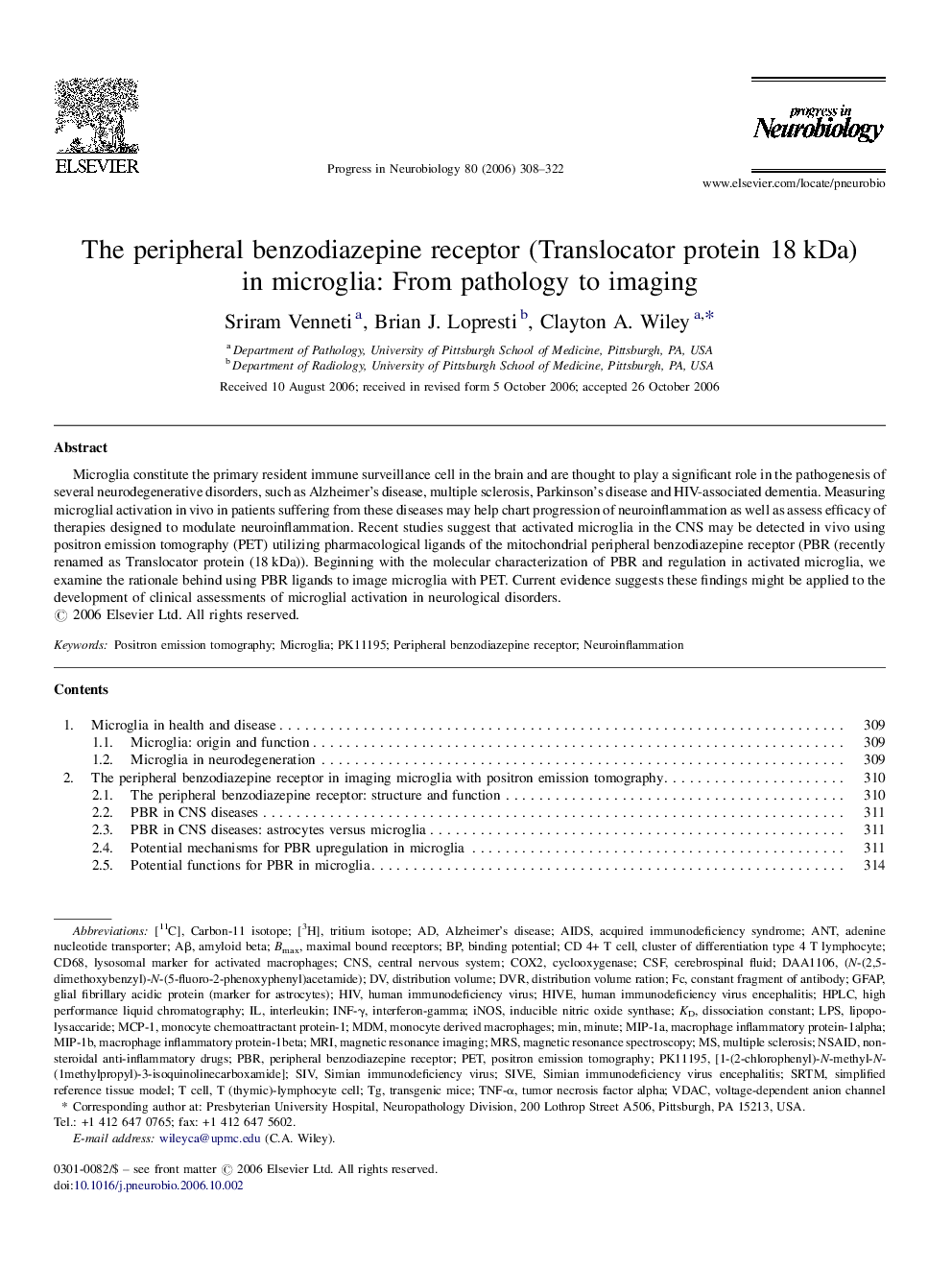| Article ID | Journal | Published Year | Pages | File Type |
|---|---|---|---|---|
| 4354008 | Progress in Neurobiology | 2006 | 15 Pages |
Abstract
Microglia constitute the primary resident immune surveillance cell in the brain and are thought to play a significant role in the pathogenesis of several neurodegenerative disorders, such as Alzheimer's disease, multiple sclerosis, Parkinson's disease and HIV-associated dementia. Measuring microglial activation in vivo in patients suffering from these diseases may help chart progression of neuroinflammation as well as assess efficacy of therapies designed to modulate neuroinflammation. Recent studies suggest that activated microglia in the CNS may be detected in vivo using positron emission tomography (PET) utilizing pharmacological ligands of the mitochondrial peripheral benzodiazepine receptor (PBR (recently renamed as Translocator protein (18Â kDa)). Beginning with the molecular characterization of PBR and regulation in activated microglia, we examine the rationale behind using PBR ligands to image microglia with PET. Current evidence suggests these findings might be applied to the development of clinical assessments of microglial activation in neurological disorders.
Keywords
cox2LPSDAA1106MCP-1monocyte derived macrophagesINF-γDVRGFAPBmaxiNOSAβMDMCD68ANTcyclooxygenaseAIDSinterferon-gammainterleukinamyloid betaAlzheimer's diseaseDistribution volumeDissociation constantMinadenine nucleotide transporterCNSminuteinducible nitric oxide synthaseacquired immunodeficiency syndromecentral nervous systemlipopolysaccarideCSFCerebrospinal fluidhuman immunodeficiency virusHIVbinding potentialmonocyte chemoattractant protein-1high performance liquid chromatographyHPLCHive
Related Topics
Life Sciences
Neuroscience
Neuroscience (General)
Authors
Sriram Venneti, Brian J. Lopresti, Clayton A. Wiley,
